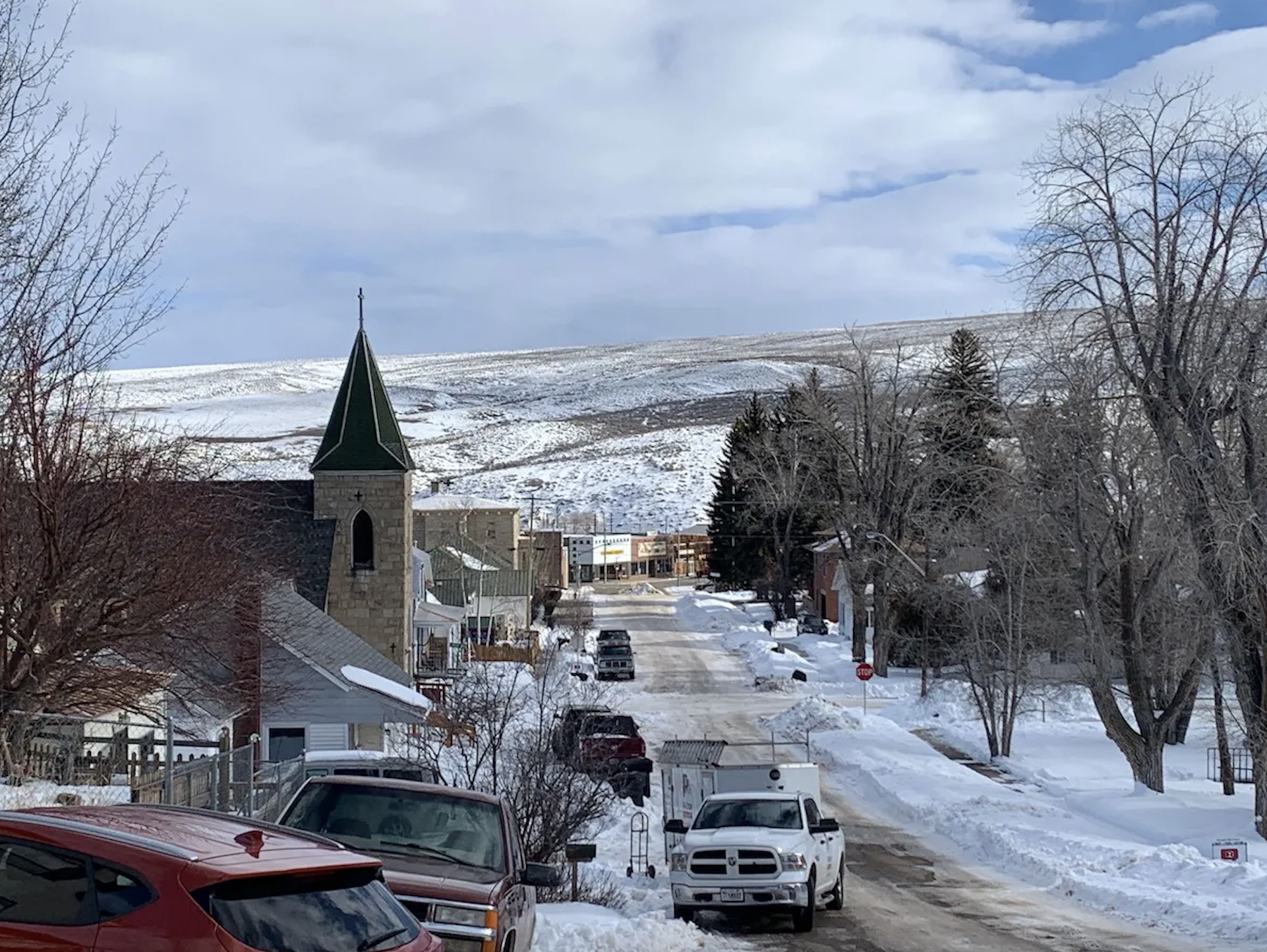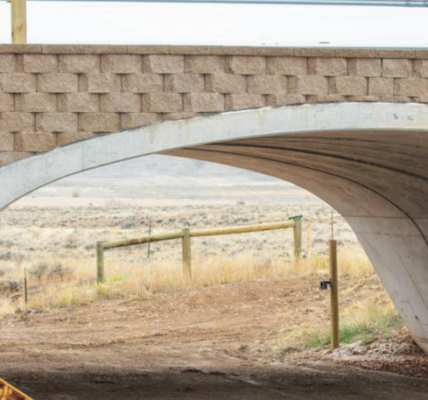
• Some Kemmerer and Diamondville residents worry the communities are unprepared to take advantage of major energy construction projects.
Dustin Bleizeffer/WyoFile.com
KEMMERER—When Jamie Miller stepped away from her 15-year career in health care, she moved back to her hometown in southwest Wyoming for a slower pace of life where she and her daughter could set roots.
“After the whole [pandemic] I decided I’m burned out already,” said Miller, 46, who’d traveled the country working in cardiac interventional medicine. “I want to do something different. I want to connect to my community because I feel like I haven’t been connecting with a community.”
She’d always been a prolific seamstress, a skill she’d acquired as a youngster attending 4-H sewing classes in Kemmerer. She launched her own business, Sew Single Mom Designs, doing custom work for paying clients. The business doubles as an opportunity for Miller to provide volunteer services. She teaches sewing to disabled and at-risk students, as well as seniors and veterans. She also provides vocational rehabilitation via a state workforce program.
“I manage to eke out a living,” Miller said recently while making final stitches on a client’s order. “I’m making enough to cover my costs, plus offer something to the community.”
But soon after returning, she discovered her hometown was suffering from years of economic decline and an aging population. The same out-of-state policies and market forces that resulted in job and revenue losses at the nearby Kemmerer coal mine and Naughton power plant had also prompted state-level social service cuts, leaving communities like hers with unmet needs.
The state trimmed wage compensation for its vocational readiness and rehabilitation programs, a devastating blow to some of her young clients. Schools had already consolidated in tandem with a shrinking student population. An outdated heating and air conditioning system at the senior center had driven costs skyward for seniors living on fixed incomes, she said, while the local hospital cut its childbirth and surgical services.
“What I’m feeling as a small business owner and volunteer is that state support has dwindled,” Miller said.
It seemed as though Kemmerer and neighboring Diamondville were morphing into a shell of their former selves until, in November 2021, TerraPower announced Kemmerer as the location to build its inaugural Natrium nuclear power plant. The $4 billion project — backed by the U.S. Department of Energy and TerraPower founder Microsoft billionaire Bill Gates — is touted as an economic lifeline for the communities.
The news has given residents and business owners a renewed, optimistic outlook, Miller said, and she’s happy for the opportunities the Natrium project promises. But she worries the community, after years of decline, is on its heels and unable to meet basic needs for those who still call Kemmerer and Diamondville home — let alone the wave of new needs that promise to accompany the project.
An energy development boom brings demands on community services and infrastructure that locals — and local budgets — often struggle to meet.
“I’d love to welcome them [construction workers]. But we don’t have any services to provide,” Miller said. “Myself and the local business owners are giving all we can right now. We need resources. We need money. We need leadership.”
Ready or not?
Estimates for the size of the Natrium project construction workforce range from 1,500 to 2,000, beginning with about 500 in 2024 and peaking sometime in 2026, according to TerraPower and local officials. The power plant is scheduled to begin operating in 2030.
How many of the construction workers and their families will choose to temporarily live in Kemmerer and Diamondville is impossible to guess, said Kemmerer City Administrator Brian Muir, because many will choose to commute from Evanston, Rock Springs, Cokeville or towns in Utah and Idaho. That’s the case currently for many employees who work at the Kemmerer mine and Naughton power plant.
Regardless of the actual influx, Kemmerer and Diamondville will be ready, according to Muir. Even in economic decline, the community has hosted large construction crews for expansions at the nearby ExxonMobile gas plant, and for annual upgrades at the Naughton plant.
“We’ve done projects here in Kemmerer before with 1,500 workers,” Muir said. “This isn’t new to us.”
Over the years, the combined population of Kemmerer and Diamondville has shrunk from about 6,000 to 3,000, Muir estimated. “We have a housing surplus. There’s been people taking vacant houses and fixing them up already” in anticipation of demand from the Natrium project, he said. Businesses throughout the southwest corner of the state are also fixing up existing hotels, apartments and RV parks to prepare for construction activity.
So far, TerraPower and community leaders agree they don’t want man camps — essentially batteries of mobile living units that isolate workers from their families and nearby towns — that have a reputation for contributing to crime spikes.
“They don’t want man camps. We don’t want man camps,” Muir said, adding that private developers are already working to build new housing in addition to existing vacant housing. “I think we’re going to be just fine” when it comes to housing.
Still, much of the existing vacant housing is in disrepair, resulting in high rental prices for those that are livable, Miller said, putting a typical rental home at $1,200 to $1,500 a month. That’s more than many residents working a non-energy sector job can afford. Miller said she worries that more temporary, high-wage earners coming to town is likely to increase the cost of living for elderly and low-income residents.
Another trend of energy boom-times is that small businesses and local governments struggle to fill lower-wage positions in retail, restaurants and social services. That’s already a struggle in the community, she said.
“We can’t open the outdoor swimming pool right now because they can’t hire lifeguards,” Miller said.
From backslide to boom
Another challenge for energy boom-and-bust towns is that a boom typically follows years of bust. Beginning with massive coal mine layoffs in 2016 and exacerbated by the pandemic’s early stages, the state made a series of budget cuts that reduced many state and local services.
“It is a harsh reality that at this point every cut will hurt,” Gov. Mark Gordon said of his proposed budget cuts in the fall of 2020. “It is a harsh reality that we cannot reduce spending without inciting further hardship on seniors, people with disabilities, and those suffering from mental illness and substance addictions.”
Since, the state has begun to restore funding to state programs that were trimmed, Gordon told WyoFile. He blames federal policies against fossil fuels for necessitating budget cuts, which he agrees didn’t help communities prepare for the current increase in big energy projects in the state.
“What I tell them [the Biden administration and federal officials] is, ‘if you cut fossil fuel production in states like Wyoming and New Mexico, you are cutting social services, education — all of those things,’” Gordon said. “You need to be a partner and step up.”
Legislative efforts to diversify the tax base have yet to take hold leaving state-funded public services reliant on fossil fuel revenues.
The challenge to transition from a declining energy economy to a booming one is a major focal point of a suite of federal “energy community” programs and funding available through the Inflation Reduction Act and Infrastructure Investment and Jobs Act. Communities like Kemmerer and Diamondville are ideal candidates to qualify for major federal grants, said Brian Anderson, executive director of the Interagency Working Group on Coal and Power Plant Communities and Economic Revitalization. That’s why his group conducts biweekly discussions with Wyoming leaders — to match community needs with federal funding.
“We know that there were declines already happening,” Anderson said, “and we need to help bring them up to speed so we don’t leave folks behind.”
Miller said those community services and infrastructure investments need to happen before major energy projects begin. Otherwise, residents could feel the impacts much more than the long-term benefits.
“I’m concerned with the impact of what’s already happening — and we haven’t even really started,” Miller said. “Our infrastructure has been failing for a really long time here.”





